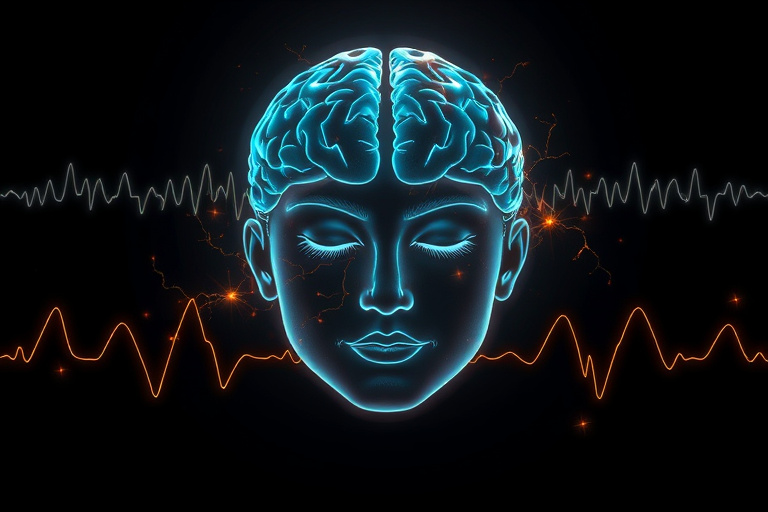Understanding Brainwave Entrainment and the Genius Wave Technology
Brainwave entrainment is a technique that uses rhythmic stimuli—such as sound, light, or electromagnetic signals—to influence the brain’s electrical activity. The goal is to synchronize brainwaves to a desired frequency, which can promote specific mental states like relaxation, focus, or alertness. This method leverages the brain’s natural tendency to align its electrical oscillations with external stimuli, thereby potentially enhancing cognitive and emotional well-being.
The Genius Wave device is a popular example of brainwave entrainment technology. It typically employs audio-visual stimuli designed to guide the brain into particular states through carefully calibrated frequencies. Users often utilize Genius Wave for various purposes, including relaxation, stress reduction, improving concentration, and cognitive enhancement. Its user-friendly interface and targeted sessions make it accessible for both beginners and experienced practitioners.
Are There Any Potential Side Effects of Brainwave Entrainment Devices?
While brainwave entrainment devices are generally considered safe when used appropriately, it is important to be aware of potential side effects. Common mild reactions reported by some users include headaches, dizziness, or feelings of fatigue after sessions. These symptoms are usually temporary and diminish with proper adjustments or rest.
Several factors can influence the likelihood and severity of side effects, such as session duration, frequency of use, and individual sensitivity. For example, longer or more intense sessions may increase the risk of adverse reactions, especially if the user is new to brainwave entrainment or has underlying health conditions. Therefore, understanding and respecting personal limits is crucial for safe practice.
Possible Mental and Emotional Side Effects of Using Genius Wave
Some users, particularly those sensitive to changes in mental states, might experience anxiety, mood swings, or emotional disturbances when using brainwave entrainment devices like Genius Wave. Improper use—such as excessively long sessions or high-intensity settings—can contribute to mental discomfort or emotional instability.
It is important to monitor your responses during and after sessions. If you notice increased anxiety, irritability, or other negative emotional effects, it is advisable to pause use and consult a healthcare professional. Recognizing these signs early can help prevent more serious mental health issues and ensure a safe experience with brainwave entrainment technology.
The Impact of Brainwave Entrainment on Mental Health Conditions
Individuals with underlying mental health issues, such as anxiety disorders, depression, or bipolar disorder, should exercise caution when considering brainwave entrainment devices. Although some research suggests potential benefits, there is limited comprehensive data on safety for vulnerable populations.
Current evidence indicates that brainwave entrainment may influence mood and emotional regulation, which could be beneficial or problematic depending on the individual. Therefore, it is strongly recommended to consult with a healthcare professional before incorporating devices like Genius Wave into your mental health management plan. Personalized guidance can help mitigate risks and optimize outcomes.
Evaluating the Safety and Effectiveness of the Genius Wave Device
Assessing the safety and effectiveness of brainwave entrainment devices like Genius Wave involves examining available testing, user feedback, and any clinical validation. While some devices undergo rigorous testing, others rely on user testimonials and manufacturer claims, which may vary in reliability.
Following safety protocols is essential. This includes adhering to recommended session durations, avoiding high-intensity settings without prior acclimatization, and ensuring proper use as per the manufacturer’s instructions. Such practices help minimize risks and enhance the potential benefits of brainwave entrainment technology.
Long-Term Risks and Considerations for Continuous Use
Research on the long-term effects of continuous or high-intensity brainwave entrainment is still emerging. Some concerns include the possibility of neurophysiological changes, dependency, or adverse effects from prolonged exposure. While current evidence does not conclusively demonstrate serious long-term risks, caution is advised.
To promote safe and sustainable use, it is recommended to limit session frequency, incorporate regular breaks, and monitor mental and physical responses over time. Consulting healthcare professionals periodically can also help ensure that ongoing use remains beneficial and safe.
How to Minimize Side Effects and Safely Incorporate Genius Wave
Beginners should start with low-intensity settings and short sessions to gauge their response. Gradually increasing duration and intensity allows the brain to adapt safely. Monitoring your mental and physical responses during sessions is vital; if you experience discomfort, reduce the session length or intensity.
If adverse effects persist or worsen, it is important to seek professional advice or discontinue use altogether. Maintaining a cautious approach ensures that brainwave entrainment remains a safe tool for cognitive and emotional enhancement.
Final Thoughts: Balancing Benefits and Risks of Brainwave Entrainment
While brainwave entrainment devices like Genius Wave offer promising benefits for relaxation, focus, and cognitive enhancement, understanding the potential safety concerns is essential. Current research suggests that, when used responsibly, these tools can be effective and safe for most individuals. However, personalized and cautious use is key to minimizing risks.
Ongoing research continues to shed light on the long-term implications of brainwave technology. As with any health-related intervention, responsible usage practices—such as following manufacturer guidelines and consulting professionals—are crucial for achieving optimal results while safeguarding mental and physical well-being.




